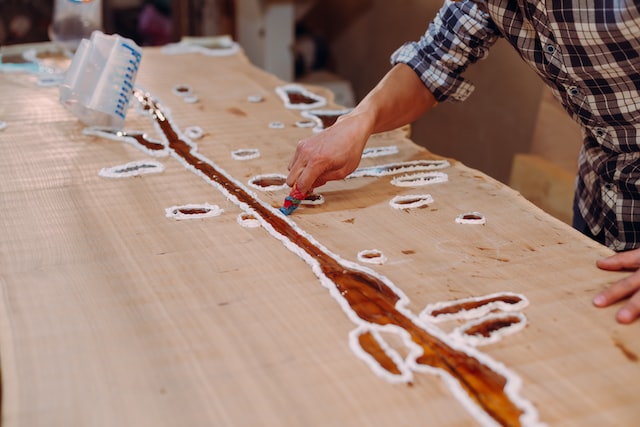If you’re looking for a material that is strong and durable enough to resist almost any kind of weather or force, then epoxy resin is the answer. With its superior chemical resistance, ability to bond to almost any surface, and low cost, it’s no wonder why this type of resin has become so popular in the DIY world. But before you start experimenting with epoxy resin, there are a few things you should know first. This article will explore five essential facts about epoxy resin that everyone should know before they start working with it. Read on to learn more about this incredible material and how it can help you create beautiful projects for years to come.
What is Epoxy Resin?
Epoxy resin is a material that is often used in the construction and repair of various objects. It is made up of two main components: a base resin and a hardener. When these two substances are mixed together, they create a chemical reaction that causes the mixture to become hard and brittle. Epoxy resin is often used to repair cracks or holes in concrete, metal, or glass surfaces. It can also be used to create new structures, such as countertops or shelving.
What are the Different Types of Epoxy Resin?
There are two types of epoxy resins: solid and liquid. Solid epoxy resin is a type of plastic that is hard and brittle. It is used in products such as electronic equipment and aircraft parts. Liquid epoxy resin is a type of glue that is used to bond metal, glass, and other materials together.
How to Use Epoxy Resin
Epoxy resin is a two-part adhesive that can be used to repair damaged surfaces or to adhere two surfaces together. When mixed together, the two parts of epoxy resin create a strong bond that is resistant to heat and chemicals. Epoxy resin can be purchased at most hardware stores and home improvement centers.
To use epoxy resin, mix equal parts of the two components together. Once mixed, apply the epoxy resin to the surface using a putty knife or other suitable tool. For best results, allow the epoxy resin to cure for 24 hours before putting any weight on the repaired surface.
Pros and Cons of Epoxy Resin
Epoxy resin is a type of strong adhesive that is often used in construction and manufacturing. It is made up of two parts, a resin and a hardener, which when mixed together create a tough, durable bond. Epoxy resin is ideal for bonding metal, glass, ceramic and most plastics. It can also be used to fill gaps and holes, making it a versatile product for many different applications.
There are some advantages and disadvantages to using epoxy resin, so it’s important to weigh up the pros and cons before deciding if it’s the right product for your needs.
Pros:
-Strong and durable bond
-Can be used on many different materials
-Fills gaps and holes effectively
-Resistant to temperature changes and chemicals
-Relatively easy to use
Cons:
-If not mixed correctly, the bond will be weak or nonexistent
-The fumes from epoxy resin can be harmful if inhaled
-It can be messy to work with
-Expensive compared to other adhesives

What Epoxy Resin Supplies Do Beginners Need?
If you’re new to working with epoxy resin, there are a few supplies you’ll need to get started. Here’s a list of the basics:
-Epoxy resin: You’ll need a high-quality best epoxy resin Australia for your projects. We recommend products like EasyCast Clear Casting Epoxy or Art Resin.
-Measuring cups: You’ll need these to measure out the correct amount of resin and hardener.
– mixing sticks: These will be used to mix the resin and hardener together.
-Disposable cups: These can be used to hold your mixed resin while you’re working.
– gloves: Epoxy resin can be tough on your skin, so it’s important to wear gloves while working with it.
– drop cloths or old newspapers: Epoxy resin can be messy, so it’s a good idea to cover your work area with drop cloths or old newspapers.
Finish Your Epoxy Resin Work
Assuming you have already mixed your epoxy resin and hardener according to the instructions, here are some tips on how to finish your work:
1. Use a level surface: When you’re working with epoxy resin, it’s important to use a level surface. This will ensure that your piece is evenly cured and doesn’t have any bubbles or other imperfections.
2. Use gloves: Epoxy resin can be tough on your skin, so it’s important to wear gloves when you’re working with it. This will protect your hands from the chemicals in the resin.
3. Work in small batches: If you’re working on a large project, it’s best to work in small batches. This way, you can make sure that each batch is mixed correctly and cures properly.
4. Be patient: Epoxy resin takes time to cure properly, so it’s important to be patient. Don’t try to hurry the process along by using excessive heat or other methods; this can cause the resin to become brittle and breakable.





